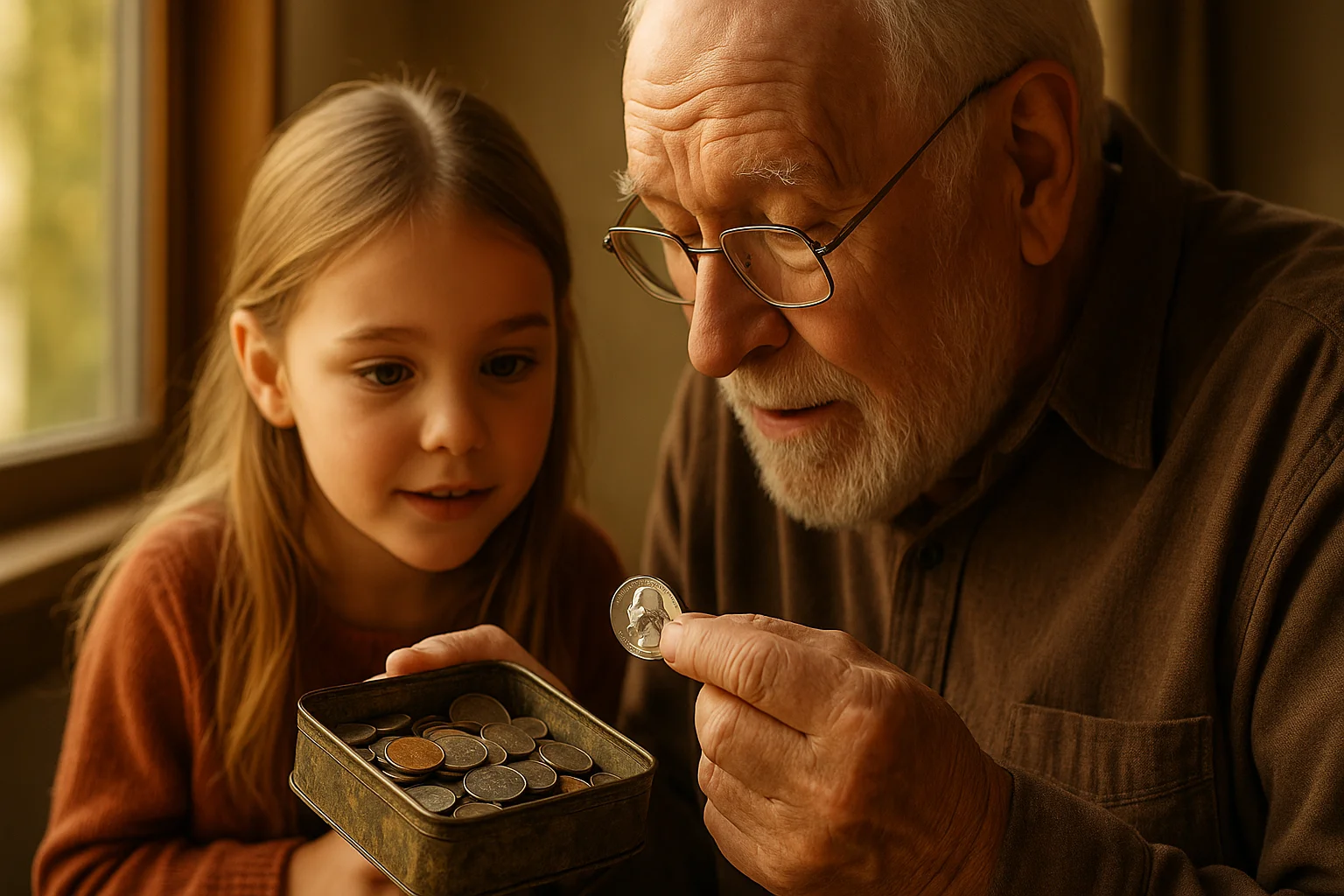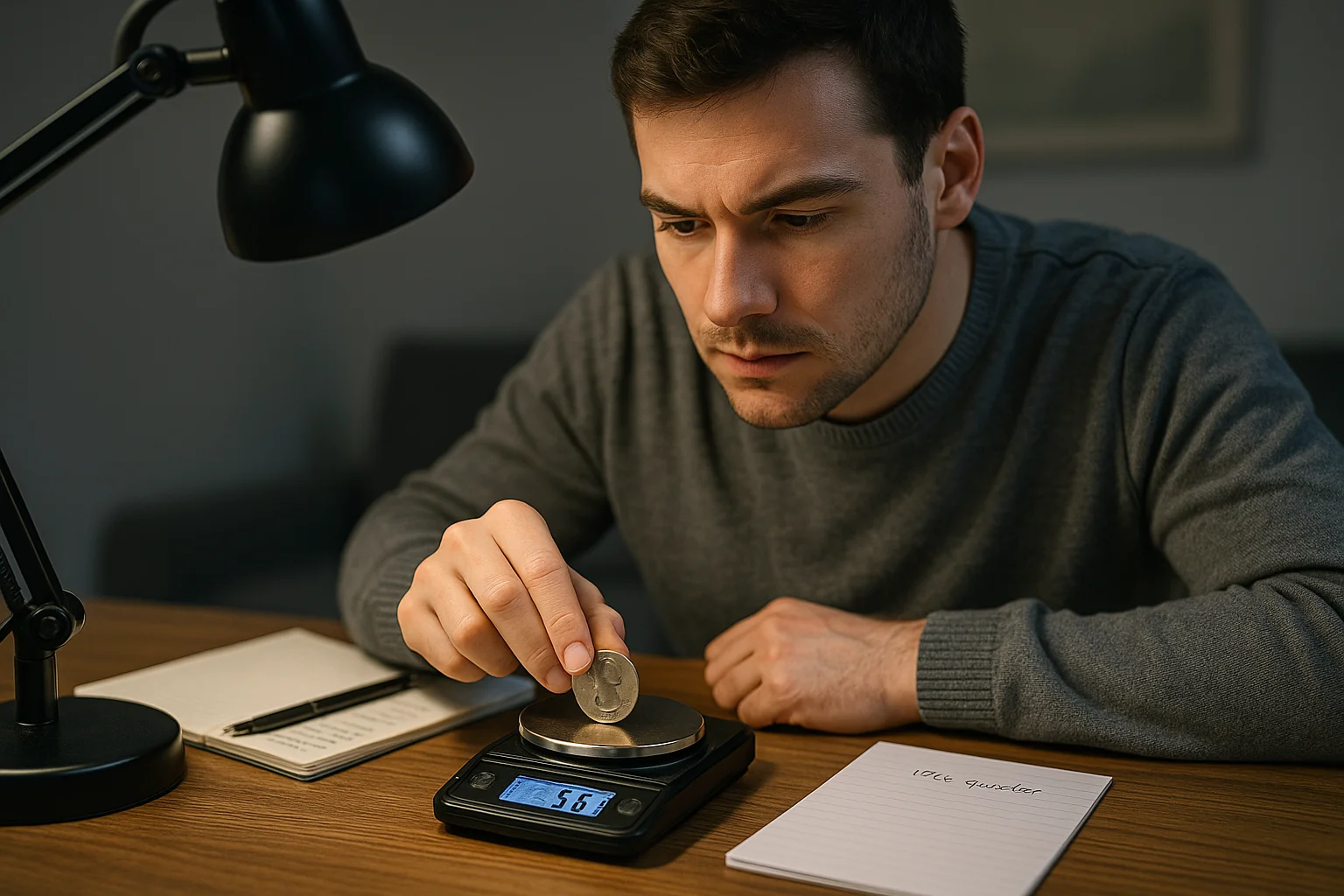The 1966 quarter is one of those coins that often attracts unnecessary hype. Many people still believe it’s made of silver or that it’s worth hundreds of dollars. The truth is simpler: the 1966 quarter value depends on its condition, production type, and whether it has any verified mint errors.
In recent years, this coin became a common topic on forums, videos, and “rare coin” lists. Many misunderstand its origin and mistake shiny pieces for silver ones. Today we try to separate facts from rumors and explain what really influences the 1966 quarter’s worth.
Quick Facts — What Collectors Should Know About the 1966 Quarter
Before checking myths, it helps to know the coin’s basics.
| Feature | Details |
| Denomination | Washington Quarter (25 cents) |
| Year of Issue | 1966 |
| Composition | 75% copper, 25% nickel (no silver) |
| Weight | 5.67 grams |
| Diameter | 24.3 mm |
| Edge | Reeded |
| Mint Mark | None (all struck in Philadelphia) |
| Designer | John Flanagan |
| Type | Regular Strike & Special Mint Set (SMS) |
These quarters were transitional. The U.S. Mint had just stopped using silver, and mint marks were temporarily removed.

The Historical Context — Why There Were No Mint Marks or Silver
After the Coinage Act of 1965, all dimes and quarters switched from 90% silver to a copper-nickel alloy. This change reduced production costs and helped fight the shortage of coins caused by silver hoarding.
Between 1965 and 1967, the Mint removed mint marks entirely. The idea was to prevent collectors from saving coins from certain mints and worsening the shortage. That’s why all 1966 quarters look the same — there are no Denver or San Francisco marks.
Every 1966 quarter is made from a copper core and nickel coating. The edge shows a visible brown stripe, a sign of the clad (non-silver) composition.
How to check for silver:
- Clad quarters weigh 5.67 g.
- Clad quarters sound dull and muted.
Tip: Use a small digital scale to confirm the weight to prove what type of coin you have.
Common Myths About the 1966 Quarter
Even after decades, myths about the 1966 quarter continue to spread online. Below are the most common claims and the real facts behind them.
Myth 1: “It’s Made of Silver”
No 1966 quarters were struck with silver. The last silver Washington quarters were made in 1964. All quarters from 1965 onward use the same copper-nickel clad composition still in circulation today.
Many coins appear shiny because of cleaning or light wear. That brightness does not indicate silver. A quick weight test or a look at the coin’s edge will confirm it’s not made of precious metal.
Tip: Never clean coins to make them brighter — it removes the original finish and lowers value.
Myth 2: “It’s Extremely Rare and Worth Hundreds”
In reality, over 820 million 1966 quarters were minted. That’s not rare by any definition. Most still exist in circulation or collections.
Only uncirculated coins in high grades (MS67 or better) carry collector maximums. These are difficult to find but far from impossible.
| Condition | Approximate Value |
| Circulated | $0.25 – $1 |
| Uncirculated (MS60–MS64) | $1 – $10 |
| Choice Uncirculated (MS65–MS66) | $20 – $50 |
| Premium Gem (MS67+) | $100 – $200 |
| SMS (Special Mint Set) | $30 – $150 |
A regular 1966 quarter in your pocket is likely worth face value. Only coins preserved since release, without scratches or wear, sell for higher prices.
Myth 3: “It Has Secret Mint Errors That Make It Valuable”
Many viral videos and online listings show “rare 1966 quarter errors.” Most of them are not real mint mistakes. They are damage caused after minting — scratches, dents, heat marks, or corrosion.
Verified mint errors do exist, but they’re uncommon. The main recognized ones include:
- Doubled Die Obverse (DDO): doubling visible on “IN GOD WE TRUST” or “LIBERTY”; worth $100–$600+.
- Off-Center Strike: part of the design missing due to misalignment; value $200–$2,500 depending on the percentage off-center.
- Clipped Planchet: part of the coin’s edge missing; $50–$150 depending on size.
Tip: True errors are certified by grading services such as PCGS or NGC. Remember that true errors are always confirmed by PCGS or NGC and minor scratches or worn letters don’t count as mint errors.
The Real Value of the 1966 Quarter — What Actually Matters
Collectors and buyers focus on a few practical factors that determine price.
1. Condition (Grade)
Coins without wear, scratches, or discoloration are worth the most. Even one small nick can lower grade and price.
2. Strike Quality
Sharp edges, clean details, and full hairlines on Washington’s portrait indicate a better strike.
3. Luster
Original mint shine adds appeal. Coins that retain their smooth reflective surface sell for more.
4. Type
Special Mint Set (SMS) coins often bring higher prices due to limited release and improved finish.
| Grade | Type | Value Range |
| Circulated | Regular Strike | $0.25–$1 |
| MS60–MS64 | Regular Strike | $1–$10 |
| MS65–MS66 | Regular Strike | $20–$50 |
| MS67+ | Regular Strike | $100–$200 |
| SMS | Special Mint Set | $30–$150 |
Identifying Special Mint Set (SMS) Quarters
The Special Mint Set version of the 1966 quarter often confuses collectors. It’s not a proof coin but was made precisely with sharp details and polish for collectors.
How to identify an SMS coin:
- Even, satin-like surface with no visible wear.
- Sharper edges and letters.
- No mint mark, like all 1966 quarters.
- Came originally in a sealed U.S. Mint plastic case marked “Special Mint Set.”
These coins were not used in daily transactions. They were sold directly by the Mint in small collector sets. Because of better quality control, many survive in high grades.
Tip: Under angled light, SMS quarters show smooth reflection, while regular strikes scatter light unevenly.
Realistic Expectations — Where True Rarity Lies
Many collectors start by chasing “viral” coins mentioned in online videos. That often leads to disappointment. True rarity is measured differently — by verified scarcity, unique mint features, and certified grade.
For 1966 quarters, real rarity lies in:
- Mint errors certified by professional grading companies.
- SMS coins in perfect condition (SP67–SP68).
- Original, uncleaned examples with natural patina.
Coins that are common in rolls, pocket change, or bulk lots have minimal premium. Still, they play an important role for learning how to grade and identify real potential.
Tip: Focus on recognizing quality. Even a $1 coin teaches grading and inspection skills valuable for higher-end collecting later.
Practical Tips for Collectors
Where to Search
Old change jars, inherited coin boxes, and estate sales often hide untouched quarters from the 1960s. You can also buy rolls from banks or check coin shows for SMS examples.
How to Examine Coins
- Weigh the coin — should read 5.67 grams.
- Inspect with a magnifier under soft light.
- Hold by the rim to avoid fingerprints.
- Never polish or use chemicals.
How to Store Properly
Use holders made without PVC, or store coins in acid-free albums. Keep them in a dry, cool room away from sunlight.
Use Technology to Simplify the Process
The Coin ID Scanner app helps identify coins quickly by photo. It shows the year, mint mark, metal composition, and estimated market value. It also lets collectors build a digital catalog — tracking grades, conditions, and duplicates. For beginners, the app is the best way to confirm what they own and learn which pieces deserve attention.

Myths vs. Facts About the 1966 Quarter
The 1966 quarter is often surrounded by myths that exaggerate its worth. It is not silver and not rare, but it does represent an important moment in U.S. coin history — the shift from silver to copper-nickel composition.
Its true value depends on simple factors: grade, strike quality, and verified mint errors. Regular pieces are worth face value, while top-grade or SMS examples can be valued more. So, know these details to avoid overpaying for common coins and focus on rarities that deserve attention.